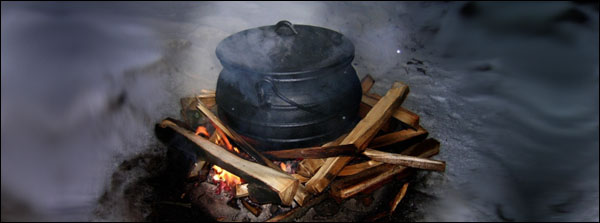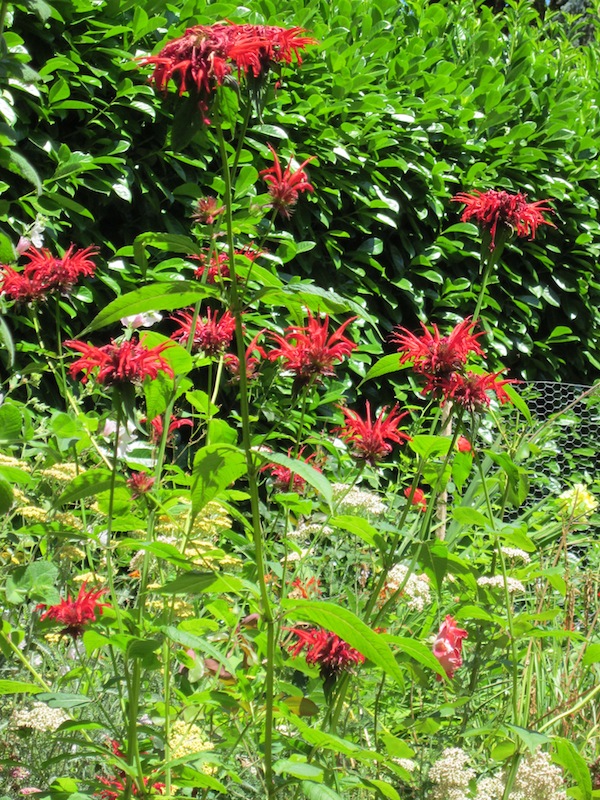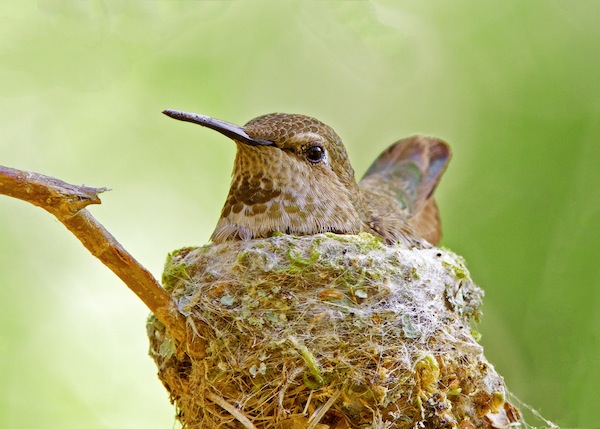Why Can’t They Just Share?—Hummingbirds in the Garden

“I didn’t plan it this way, but it turns out that my backyard garden has the exact number of flower blossoms in it to support one hummingbird: no more, no less.” Anita Sullivan
The Highest Cauldron
By Anita Sullivan

EUGENE Oregon—(Weekly Hubris)—7/29/2013—I didn’t plan it this way, but it turns out that my backyard garden has the exact number of flower blossoms in it to support one hummingbird: no more, no less.
The configuration goes roughly like this: Moving from shade to sun, two bleeding heart bushes surrounded by salvia, give way to a large clump of bee balm, followed almost immediately by a thick stand of flaming red crocosmia. This is where the vegetable section begins and, most years, I accomplish the segue with a trellis of scarlet runner beans.
My entire segment of red-flowers-with-long-seductive-throats extends for about 20 feet, surrounded and interrupted by yellow dahlias, white peonies, oleander, purple pincushion flower, yarrow, pink hollyhocks, and some gorgeous clumps of stuff I can no longer remember the names of.
The original plan was to have a garden biased in favor of hummingbirds—plural.
The two hummingbird species that show up here in Western Oregon’s Willamette Valley every summer, Anna’s and Rufous, each measure barely 4 inches from head to tail, and about half as wide through the tummy. They expend a tremendous amount of energy beating their wings at 70 times per second so they can hover like tiny helicopters in front of every single flower—sometimes flying backwards, or vertically in order to poke their beaks straight up into a downward-drooping blossom.
During the high summer season when the little hummers get most of their nutrition from nectar, they’re on a constant sugar high, which gives them a ferocious amount of energy to get rid of. Nonetheless (so common lore has it), they live on a knife-edge balance between the amount of energy their bodies can store, compared to the amount they must expend in the normal (insanely) active process of feeding themselves. So, yes, hummingbirds are focused: they do not pootle.

Nonetheless, they do engage in extracurricular activities, and this I find very puzzling.
If Nature were the well-honed Darwinian machine we are led to believe it is, then these hummingbirds would be constrained to behave like wind-up toys, moving deftly and with the least amount of excess motion, from flower to flower. Their little brains would be clicking like abacuses as they progressed through their territory, constantly re-calculating the shortest distance between two points so they wouldn’t get all fagged out by making a long detour around the apple tree on the way to the sweet peas (for example).
Instead? Instead, these silly poppets fritter away half their energy every day chasing each other around the garden in huge loopy circles while chittering at the top of their lungs. Their favorite game might well be called Hummingbird-In-The-Manger: by which I mean if one hummingbird is quietly sipping and a second one inserts even the tip of her beak over the hedge from the next yard, the first one is off like a flash to chase her out.
I truly cannot see how this never-finish-a-meal-in-peace behavior serves any real survival purpose. They don’t seriously fight; they are simply driven to stand their ground (pardon the expression) above all else. Yet the primary impression given by the pugnacious little ritual is that both birds are having a high old time.
Of course, these eejits (as the British like to say), who behave as if they were working out in a CrossFit
Gym, obviously thrive despite this daily energy-squandering routine: I do not come across exhausted bodies scattered about on the grass like electric cars that didn’t make it to the next charging station on time.
In summer, at any rate, the energy of these tiny birds must be something close to nuclear in its fission capacities: one atom of bee-balm nectar = ten seconds flying at 20 mph almost straight up and then zipping diagonally across the whole garden, only to come to a halt on a holly twig in the next yard, scarcely winded and ready for the next round.

I suppose the “purpose” of these seemingly suicidal digressions from the serious business of staying alive would be in keeping the little birds fit, either for their long migration (Rufous), or in the case of the Anna’s, who stay here all winter, to withstand the long cold months stuck with a diet of bugs and lichen.
But I really don’t think so. I think Nature has an infinity of stops, pulls them all out, and some creatures choose “all of the above,” and damn the consequences.
Last week I went out and bought a juicer. I want to learn to fly straight up.

Note: The drawings of the Rufous hummingbird may be found at http://animals.nationalgeographic.com/animals/birding/rufous-hummingbird/; the photo of a nesting Anna’s Hummingbird, taken by Steve Berardi, derives from http://commons.wikimedia.org/wiki/File:Anna%27s_Hummingbird_Nest.jpg.

3 Comments
Elizabeth Boleman-Herring
Anita, having JUST been in my beloved South Carolina, at the home of our fellow columnist Will Balk, I have been observing hummingbirds again up close and personal. In my mother’s last year, watching the birds in her garden–what she, occasionally, mis-called “bumminghirds”–we had rare moments of peace, stolen from cancer. It is almost always possible to shrink life down to something beautiful and small, and focus there–something beautiful, small and fierce (very like my mother, in her last year). Reading your piece here took me back to that bee-glad glade, and its tiny, often perverse, warriors. Thank you! (Proud always to be) Your Editor
Anita Sullivan
This is lovely, and brings tears. Thank you, dear, dear Editor.
Penny
My husband and I love our hummies. We had 2-4 hang out all winter. They love the rain. We live up above and among grape and walnut vineyards. Tonight we just had our first rufous tonight and what a brilliant orange with the brightest red head. I can’t see any green but like I said it was getting to be night time. Loved reading your article. Is the female that vibrant in color? Because this one is a little fatty which I’m assuming it’s a female and she’s pregnant. VERY TERRITORIAL. Any extra info you could give me about these little feathered friends would be appreciated. Thank you.